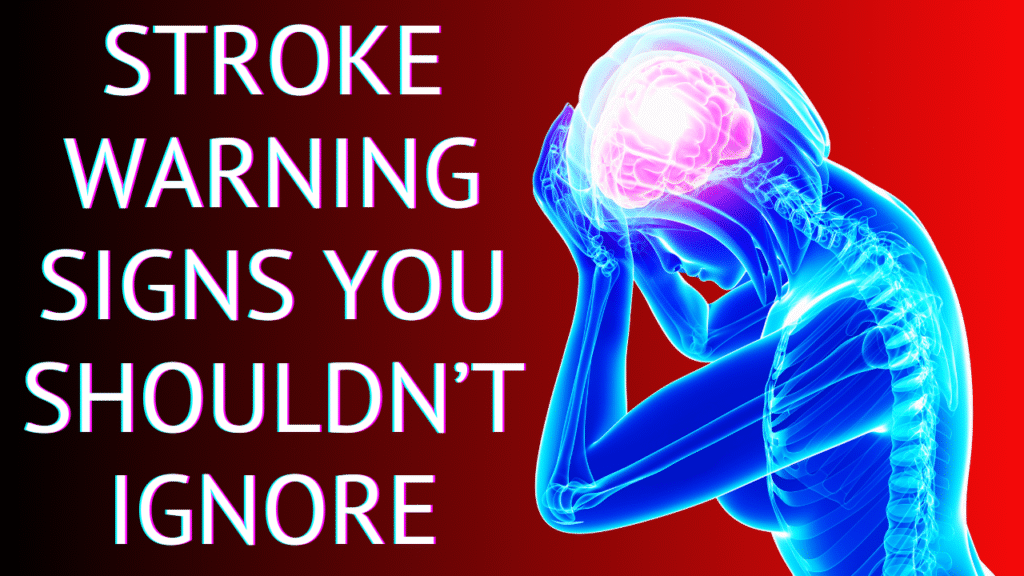
Have you ever had a strange feeling in your arm, a sudden headache, or a moment where your speech just didn’t come out right—and brushed it off?
You’re not alone. Shockingly, 1 in 5 people who suffer a stroke never knew they were at risk.
And the scariest part?
Strokes can happen to anyone, anytime—no matter your age, lifestyle, or fitness level. When they do, every second can mean the difference between full recovery and permanent disability.
In this article, we break down the warning signs, risk factors, and most importantly—how you can act FAST to save a life.
🧠 Part 1: What Exactly Is a Stroke?
A stroke—sometimes called a “brain attack”—occurs when blood flow to part of the brain is suddenly interrupted. This robs brain cells of oxygen and nutrients, and within minutes, those cells start to die.
That’s why stroke is not only one of the top 4 causes of death globally, but also a leading cause of long-term disability.
There are two main types of stroke:
- Ischemic Stroke – Caused by a clot blocking blood flow to the brain (most common).
- Hemorrhagic Stroke – Caused by a ruptured blood vessel leading to bleeding in the brain.
Both types are true medical emergencies. And in every case, speed is everything.
🚨 Part 2: The Stroke Symptoms You Should Never Ignore
Stroke symptoms often appear suddenly and without warning. Recognizing them early can be life-saving.
Here are the red flags to watch for:
- Sudden numbness or weakness, especially on one side of the body
- Slurred speech or trouble speaking
- Confusion or difficulty understanding
- Blurred or double vision, or vision loss in one or both eyes
- Dizziness, loss of coordination, or trouble walking
- Severe headache with no known cause
⚠️ Even if these symptoms disappear after a few minutes, they may signal a mini-stroke, or Transient Ischemic Attack (TIA)—a serious warning sign that a major stroke could be coming soon.
Never wait it out. Always seek immediate medical help.
⏱️ Part 3: The F.A.S.T. Test That Could Save a Life
Wondering how to check if someone might be having a stroke?
Use the easy-to-remember F.A.S.T. test:
- F – Face: Ask them to smile. Does one side droop?
- A – Arms: Can they raise both arms? Does one drift downward?
- S – Speech: Is their speech slurred or strange?
- T – Time: If you see any of these signs, call emergency services immediately.
🧠 Every minute a stroke goes untreated, about 2 million brain cells die.
Time lost = brain lost.
⚡ Part 4: Are You at Risk for Stroke?
While anyone can have a stroke, certain risk factors increase the likelihood dramatically. Some may surprise you.
Major risk factors include:
- High blood pressure (the #1 cause)
- Diabetes
- High cholesterol
- Smoking
- Obesity and inactivity
- Atrial fibrillation (irregular heartbeat)
- Excessive alcohol use
- Age (risk increases after 55)
- Family history of stroke
- Migraines with aura
Here’s the good news: Most risk factors are manageable. By making lifestyle changes and staying on top of medical care, you can dramatically lower your risk.
🤔 Part 5: Stroke or Migraine? Know the Difference
It’s easy to confuse a stroke with a migraine, especially when both come with visual disturbances or head pain.
Here’s how to tell them apart:
- Migraines usually build gradually, often with flashing lights or zigzag lines.
- Strokes come on suddenly, and often involve loss of function—like speech, movement, or vision.
- Migraine auras add new sensations (flashing lights, tingling).
- Stroke symptoms typically involve loss—numbness, weakness, confusion.
Still not sure? Don’t gamble. Call emergency services. It’s always better to be safe than sorry.
💪 Part 6: 8 Ways to Prevent a Stroke—Starting Today
You can’t control your age or family history. But you can make small, consistent changes that add up to powerful protection.
Here are 8 science-backed strategies:
- Eat a heart-healthy diet – Focus on whole foods, fruits, veggies, lean protein, and omega-3s.
- Lower your blood pressure – It’s the #1 preventable risk factor.
- Get moving – Just 30 minutes a day of walking makes a difference.
- Quit smoking – Smoking damages blood vessels and raises clot risk.
- Limit alcohol – No more than 1 drink/day for women, 2 for men.
- Control blood sugar – Especially crucial if you have diabetes.
- Treat atrial fibrillation – Don’t ignore an irregular heartbeat.
- Maintain a healthy weight – Even small weight loss reduces risk.
🎯 Pro Tip: Don’t try to change everything overnight. Pick one habit, commit, and build from there.
The Bottom Line: Stroke Doesn’t Wait. Neither Should You.
Strokes don’t give warnings. They don’t wait until you’ve finished work or picked up the kids.
They strike fast—and often without mercy.
But now, you are armed with knowledge. You know the signs. You know how to act. And you know how to reduce your risk starting today.
🧠 Act FAST. Live smart. And share this with someone you love—it could save their life.
💬 Have you or someone close to you experienced a stroke or TIA?
Share your story in the comments. Your experience could be the wake-up call someone else needs.
Stay informed. Stay alert. Stay safe.
